If you want to learn more about how to build a play table, we recommend you to pay attention to the instructions described in the article. This small table is ideal for your kids, since it features a tray to the bottom, so you can store toys and other small items. Work with attention and plan every aspect of the construction from the very beginning, in order to keep the costs under control and to save time. Cedar, pine or redwood would provide a decent compromise between looks and durability.
Use a circular saw to adjust the size of the components, after marking accurate cut lines. Smooth the cut edges with a piece of sandpaper and remove the residues before fitting them into place. Drill pocket holes before inserting the screws, in order to prevent the wood from splitting and to create a rigid structure. Check if the corners are right-angled after fitting each component, as they usually move from position easily.
Play Table Plans
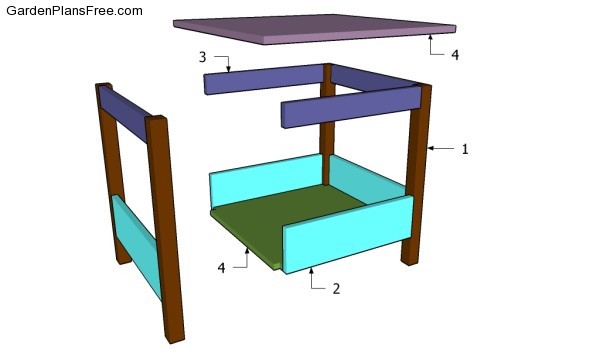
Building a play table
Materials
- 1 – 4 pieces of 2×2 lumber – 23″ LEGS
- 2 – 4 pieces of 1×6 lumber – 18″ SHELF
- 3 – 4 pieces of 1×3 lumber – 18″ FRAME
- 4 – 1 piece of 3/4″ plywood – 19 1/2″x19 1/2″ BOTTOM
- 4 – 1 piece of 3/4″ plywood – 24″x24″ TABLETOP
- 1 piece of 3/4″ plywood – 2’x4′
- 1 piece of 2×2 lumber – 8 ft
- 1 piece of 1×6 lumber – 8 ft
- 1 piece of 1×4 lumber – 8 ft
- 100 pieces of 1 1/4″ screws
- wood stain
- wood glue
Tools
- Hammer, Tape measure, Carpentry square
- Miter saw, Drill machinery, Screwdriver, Sander, Router
- Safety Gloves, Safety Glasses, Respiratory Mask
Time
- One day
Building a play table

Building the frame of the play table
The first step of the woodworking project is to build the frame of the play table. As you can easily notice in the plans, we recommend you to build the legs out of 2×2 lumber and the aprons out of 1×3 lumber. Drill pocket holes at both ends of the slats, align them properly and insert the 1 1/4″ screws into the legs.
PRO TIP: Check if the corners are right-angled by using a carpentry square. Add waterproof glue to the joints, in order to enhance the bond of the joints.
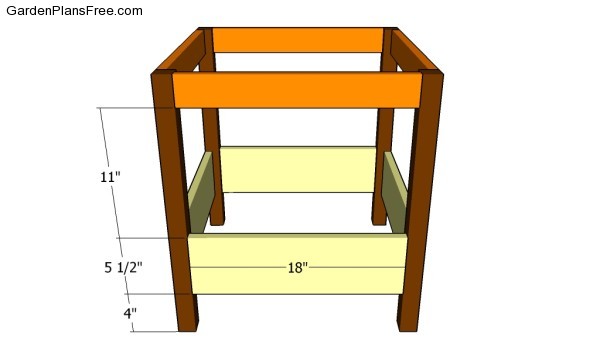
Attaching the bottom components
Continue the woodworking project by attaching the 1×6 slats to the bottom of the wooden legs. Drill two pocket holes at both ends of the slats and secure them into place with galvanized screws.
PRO TIP: Place a spirit level on top of the supports to make sure they are horizontal and check if the corners are right-angled before continuing the woodworking project. The components should be flush with the exterior of the legs.
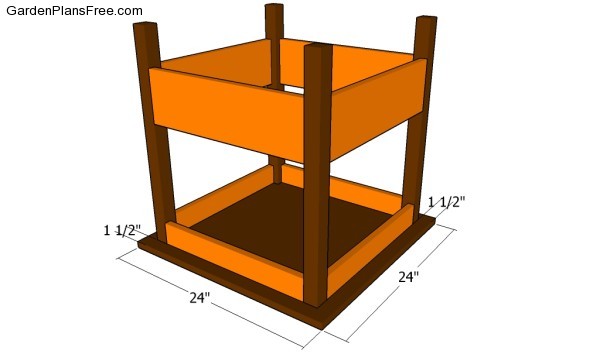
Attaching the tabletop
Attaching the 3/4″ tabletop to the frame of the table should be a straight-forward project, but you need to pay attention to several aspects before inserting the screws. Therefore, we recommend you to drill pocket holes through the aprons and insert the 1 1/4″ galvanized screws into the wooden surface. Center the 24″x24″ tabletop to the frame of the table before inserting the screws, as to get a professional result.
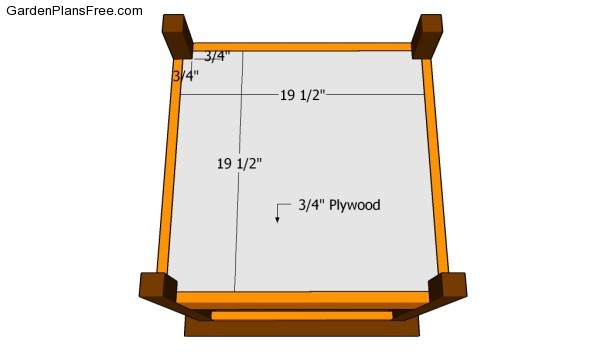
Fitting the bottom of the shelf
One of the last steps of the woodworking project is to fit the bottom of the shelf into place, as shown in the image. Cut the piece of 3/4″ plywood at the right size and shape, by using the information from the image. Use a good circular saw to make the corner notches and fit it between the components.
PRO TIP: Drill pocket holes along the edges of the plywood sheet and insert screws into the side components. Add waterproof glue to create a rigid structure.
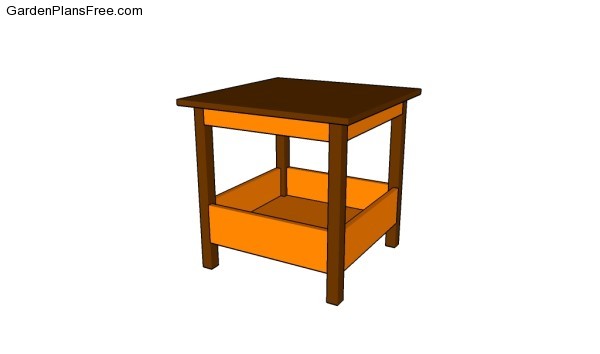
Play table plans
Last but not least, you should take care of the finishing touches. Make sure there are no gaps between the components.
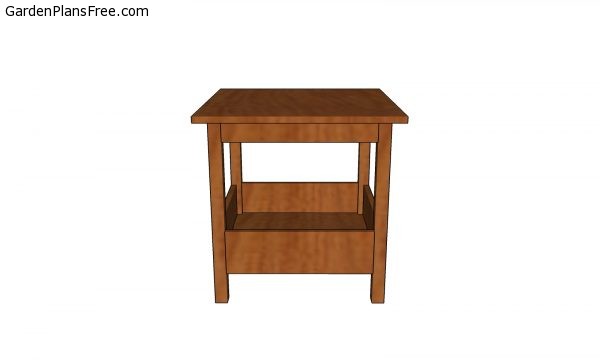
How to build a play table
PRO TIP: Fill the holes with a good wood filler and smooth the surface with 120-grit sandpaper. Apply several coats of paint or stain over the components, in order to protect them from decay.
This diy project was about play table plans. If you have enjoyed the free project, we recommend you to share it with your friends, by using the social media widgets. LIKE us on Facebook if you want to be the first that gets our latest projects.

